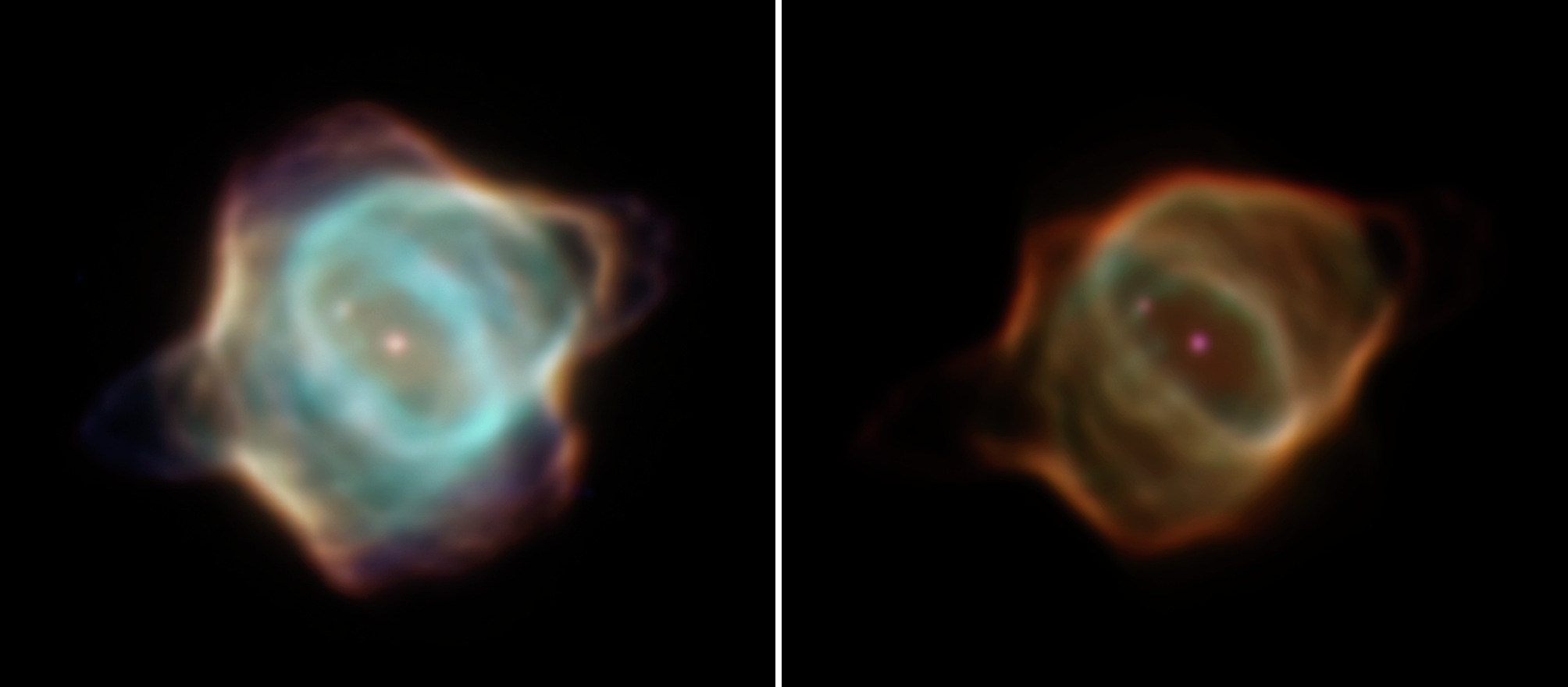Fading Ray [1]
Images from Hubble Space Telescope taken two decades apart show dramatic changes in the Stingray Nebula, the last gasp of a dying star. The star, which is visible at the center of the nebula, has expelled its outer layers into space, forming the nebula. In the image at left, taken in 1996, the nebula shines brightly, with regions of blue and green at its center. In the image at right, taken in 2016, the nebula has faded considerably. The change probably was caused by changes in the dying star. As seen in 1996, it probably was entering a new round of nuclear reactions that caused it to flare up, brightly illuminating the surrounding nebula. By 2016, that outburst had ended, and the star wasn't bright enough to energize the nebula to the same extent. The nebula is still there and still expanding into space, but with a fainter light at its center, we can't see the full extend of the Stingray. [NASA/ESA/B. Balick (Univ. Washington)/M. Guerrero (Inst. de Astrofísica de Andalucía)/G. Ramos-Larios (Univ. de Guadalajara)]
